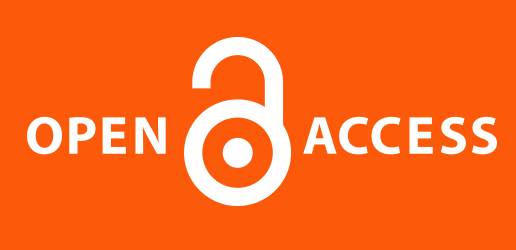
Innovation of Mechanical Practice Teaching Mode Based on Virtual Reality Technology
摘要
This study explores the application value of virtual reality technology in mechanical practice teaching. By constructing the VR mechanical teaching platform, problems such as limited equipment resources and insufficient practical opportunities in traditional teaching have been solved. Empirical research shows that this teaching mode improves students' learning efficiency and knowledge retention rate, and promotes skill acquisition. This research analyzes from a sociological perspective how VR technology reshapes the interaction mode between teachers and students, promotes educational equity, and provides a new path for cultivating engineering talents that adapt to digital transformation.1.Theoretical basis and technical background
Virtual reality (VR) technology offers brand-new possibilities for education and teaching. This technology creates an immersive virtual environment through multiple sensory channels, enabling users to interact naturally with virtual objects. In the field of mechanical practical teaching, the application of VR technology has demonstrated remarkable advantages. The theoretical basis of VR technology in education mainly stems from constructivist learning theory and situational cognition theory[1]. Constructivism emphasizes the importance of learners actively constructing knowledge, while VR technology provides a learning environment close to reality. The theory of situational cognition holds that knowledge learning and application scenarios are inseparable. VR technology can simulate various learning scenarios and make abstract knowledge concrete
From a technical perspective, modern VR systems encompass hardware such as head-mounted displays, interactive controllers, and sensors, as well as software like 3D modeling and rendering engines[2]. In mechanical practice teaching, VR technology can display the internal structure and working principle of complex equipment and simulate various operation scenarios. These characteristics make it a powerful supplement to traditional teaching. Studies show that VR technology can enhance students' interest and enthusiasm in learning and strengthen their understanding and memory of complex mechanical concepts[3]. In addition, the VR teaching system can also break through the limitations of time and space, achieve the sharing of teaching resources and remote collaborative learning, and provide new possibilities for educational equity.
2.Challenges in Mechanical Practice Teaching and the Application Value of VR Technology
2.1Challenges Faced by Traditional Mechanical Practice Teaching
Traditional mechanical practice teaching has long been confronted with multiple challenges. These challenges not only limit the teaching effect but also, to a certain extent, restrict the cultivation of students' practical ability. Firstly, the mechanical equipment has a complex structure and high cost. Many colleges and universities find it difficult to be equipped with a sufficient number and types of experimental equipment, resulting in limited practical opportunities for students[4]. Secondly, some mechanical operations pose safety risks, making it difficult for beginners to directly participate. They can only learn by observing teachers' demonstrations or watching videos, lacking personal experience[5]. Furthermore, traditional practical teaching is restricted by time and space. Students can only study in fixed laboratories and within prescribed time periods, which is not conducive to autonomous learning and individualized development.
The professional characteristics of mechanical engineering also bring teaching challenges. The internal structure and working principle of many mechanical devices are difficult to present intuitively. Students often need to understand two-dimensional drawings and theoretical models through abstract thinking, which requires a relatively high level of spatial imagination ability. Meanwhile, some phenomena in the mechanical processing (such as stress distribution and heat conduction in the metal cutting process) cannot be directly observed by the naked eye, and traditional teaching methods are difficult to effectively present these microscopic processes[6]. These factors jointly lead to problems such as the disconnection between theory and practice among students and their insufficient ability to transform knowledge.
2.2The Application Value of VR Technology in Mechanical Practice Teaching
Due to its unique characteristics, VR technology provides new possibilities for solving teaching challenges. Firstly, VR technology creates realistic virtual mechanical equipment and operating environments, allowing students to practice repeatedly without restrictions and solving the problem of insufficient resources [7]. The virtual training platform constructed based on VR can simulate the structure and operation of various mechanical equipment. One system covers multiple types of equipment, improving the efficiency of resource utilization .
Secondly, VR provides students with a safe practical environment. Students can freely try various operations. Mistakes will not cause damage to the equipment or personal injury, reducing teaching risks and costs. For high-risk operations, such as high-temperature forging and high-speed cutting, VR provides a safety training program. The VR system can also simulate fault situations and emergency handling procedures, helping students master the ability to deal with complex problems.
Figure 1.
Fig 1. Mechanical Device Operational Principle Demonstration Based on Virtual Reality
Figure 2.
Fig 2. Mechanical Device Virtual Disassembly and Assembly Based on Virtual Reality
3.Construction of mechanical Practice Teaching Mode Based on VR technology
3.1The overall framework of the teaching mode
The mechanical practice teaching mode based on virtual reality technology integrates the advantages of traditional teaching and modern technology to form a new teaching ecosystem. This model is student-centered and oriented towards ability cultivation, and has constructed a closed-loop teaching system of "theoretical learning - virtual practice - physical operation - evaluation and feedback". Under this framework, VR technology has become a core element in reconstructing the teaching process, promoting the innovation of teaching content, methods and evaluation.
From the perspective of teaching content, VR technology has broken the limitations of traditional textbooks and achieved the digitalization and interactivity of teaching resources. Through the 3D digital model library, the teaching content covers the entire process from basic principles to complex operations, meeting the needs of different students. The VR system can dynamically update the content, integrate new technologies and standards, and ensure the cutting-edge nature of the content. This solves the problems of the lagging update of traditional teaching materials and the disconnection between theory and practice.
From the perspective of teaching methods, VR technology has promoted the transformation from "teacher lecturing" to "student exploration". Teachers become the designers and guides of learning activities. Students become active explorers. The VR system provides interactive means such as virtual assembly and operation, enabling students to deepen their understanding of mechanical principles through "learning by doing". This transformation has enhanced the enthusiasm for learning, cultivated the ability of autonomous learning and innovative thinking.
3.2Design and Implementation of VR Mechanical Practice Teaching System
The VR mechanical practice teaching system is the technical carrier for realizing the new teaching mode, and its design and implementation are directly related to the teaching effect. A complete VR mechanical practice teaching system usually includes three levels: hardware platform, software system and teaching content. In terms of hardware platforms, depending on teaching requirements and economic conditions, different types of devices such as desktop VR, immersive VR or mixed reality (MR) can be selected. Research shows that although high-end VR devices can offer better immersion and interaction experiences, the solution of ordinary PCS combined with low-cost VR glasses can also meet basic teaching needs, which provides an implementation path for institutions with limited educational resources.
In terms of the software system, the VR mechanical practice teaching system needs to integrate multiple functions such as 3D modeling, physical simulation, interaction design and teaching management. At present, many researchers have utilized game engines such as Unity3D and Unreal Engine as development platforms, combined with modeling software such as Blender and 3ds Max, to construct feature-rich VR teaching systems. For instance, the VR-based auxiliary teaching system for drilling machine engineering practice realizes the full-process simulation of drilling machine operation through precise modeling and physical simulation, including workpiece clamping, parameter setting, drilling process and quality inspection, etc., enabling students to systematically master the operation skills of drilling machines.
The teaching content is the core of the VR system, and its design should follow cognitive laws and teaching objectives. A well-designed VR mechanical practice teaching content usually includes four links: knowledge explanation, operation demonstration, interactive practice and skills assessment. In the knowledge explanation session, the system visually presents mechanical principles and structural knowledge through 3D animations and interactive displays. During the operation demonstration session, the system provides a virtual demonstration of the standard operation process, allowing students to observe the key operation points from multiple perspectives. During the interactive practice session, students can actually operate in a virtual environment, and the system provides immediate guidance and feedback. In the skills assessment stage, the system automatically evaluates students' operation processes and results based on preset standards, forming a quantitative ability assessment report. This kind of content design not only conforms to the laws of learning and cognition, but also gives full play to the advantages of VR technology, which can effectively promote the acquisition of knowledge and the formation of skills.
It is worth noting that the design of VR systems should focus on the balance between educational and technical aspects. On the one hand, the system should have sufficient technological advancement to provide realistic visual effects and natural interaction methods; On the other hand, the design of the system should be oriented towards teaching objectives, avoiding the excessive pursuit of technical effects while neglecting teaching effectiveness. Studies show that appropriate technical complexity and reasonable cognitive load are the key factors for improving learning outcomes. Excessively complex operation interfaces and excessive information presentation will instead distract students' attention and affect learning outcomes. Therefore, the design of the VR mechanical practical teaching system should adhere to the principle of "people-oriented and teaching first", and find the best balance point between technological innovation and teaching needs.
4.Empirical Research on the Application of VR Technology in Mechanical Practice Teaching
4.1Research Design and Methods
In order to systematically evaluate the application effect of VR technology in mechanical practice teaching, researchers have carried out a series of empirical studies. These studies adopted various methods such as experimental control, questionnaire surveys and interview observations to verify the effectiveness of the VR teaching mode from different dimensions. In typical studies, researchers usually select specific mechanical practice courses (such as mechanical principles, mechanical design or mechanical processing, etc.), and randomly divide students into the experimental group and the control group. The experimental group adopts VR-assisted teaching, while the control group adopts traditional teaching methods. The differences between the two groups of students in terms of knowledge acquisition, skill formation and learning attitude are compared through pre-tests and post-tests.
The data collection of this type of research usually includes multiple dimensions. In terms of knowledge acquisition, students' understanding of mechanical principles and structures is evaluated through theoretical tests and practical operations. In terms of skill formation, students' operational accuracy, proficiency and adaptability are tested through standardized operation tasks. In terms of learning attitude, the changes in students' learning interest, self-confidence and learning motivation were understood through questionnaires and in-depth interviews. In addition, some studies have also collected data on the learning process, such as learning time allocation, error types, and correction behaviors, to deeply analyze the impact of VR technology on the learning process.
4.2Empirical Research Results and Analysis
Empirical research shows that mechanical practice teaching based on VR technology demonstrates significant advantages. In terms of knowledge acquisition, students who adopt VR teaching have a deeper understanding of mechanical principles. Data shows that the average score of the VR teaching group is 15% to 20% higher than that of the traditional group, especially in the understanding of complex mechanism principles, the difference is significant[9]. This stems from the intuitive display function of VR technology, making abstract principles concrete and tangible.
In terms of skill formation, VR teaching also has advantages. The error rate of students who have undergone VR training is reduced by approximately 30%, and the time to complete tasks is shortened by 25%[10]. When dealing with faults, the students in the VR group demonstrated stronger adaptability. This is because the VR system provides a safe practice environment, allowing for repeated attempts at different strategies.
In terms of learning attitude, the influence of VR technology is particularly positive. The survey shows that 85% of students believe that VR teaching has enhanced their interest, 78% say that VR has improved their confidence, and 82% hope to apply VR in more courses. The interview reveals that the novelty and interactivity of VR are the keys to enhancing learning motivation.
The research also found that the impact of VR on students with different characteristics varies. For students with weak spatial imagination ability, the auxiliary effect of VR is more obvious. For students with low learning motivation, VR can significantly enhance participation. For students with weak hands-on ability, VR is helpful for establishing the correct operation mode. This indicates that VR has the potential to teach students in accordance with their aptitudes and promote educational equity.
4.3Application Challenges and Solution Strategies
Although VR technology has shown many advantages in mechanical practice teaching, its practical application still faces a series of challenges. The first issue is cost. The development of high-quality VR devices and teaching content requires significant investment, which poses a challenge to educational institutions with limited resources. Secondly, there is the issue of technical adaptation. Some teachers and students are resistant or uncomfortable with the use of new technologies, and it takes time and training to adapt. In addition, the development and update of VR teaching content also require continuous investment from professional teams, which poses new requirements for the talent reserve and management mechanism of educational institutions.
In response to these challenges, researchers have proposed a variety of solutions. In terms of cost control, a hierarchical configuration strategy can be adopted, that is, high-end VR equipment can be configured in the core training rooms, and low-cost VR solutions (such as mobile phone VR or PC VR) can be configured in ordinary classrooms to meet the needs of different teaching scenarios. Meanwhile, through school-enterprise cooperation and joint development, the cost of content development can be shared and the efficiency of resource utilization can be improved. In terms of technical adaptation, targeted training can be carried out, concise operation guidelines can be designed, and the threshold for use can be lowered. Meanwhile, adopt a progressive application strategy, conduct pilot projects on a small scale first, accumulate experience and then promote them.
5.The Sociological significance of VR Mechanical Practice Teaching
The application of VR technology in mechanical practice teaching has profound sociological significance, the most notable of which is its promoting effect on educational equity. In traditional mechanical practical teaching, high-quality educational resources are concentrated in developed regions and key colleges and universities, resulting in educational inequality. This inequality is manifested in: differences in hardware equipment, disparities in teaching staff and imbalances in practical opportunities. VR technology, with its digital and replicable characteristics, offers the possibility of narrowing the gap.
First of all, VR technology has lowered the cost threshold of practical teaching. Compared with expensive physical devices, VR systems can be infinitely replicated and used, and have a cost advantage in the long term. This enables ordinary colleges and universities to also provide a high-quality practical environment. Secondly, VR enables the cross-regional sharing of teaching resources. Through the Internet, students from different regions can access the same VR content and receive training of the same quality. This mechanism breaks geographical limitations and enables students in remote areas to enjoy advanced resources.
In addition, VR offers personalized learning support and can provide adaptive content and progress based on students' characteristics. This helps to bridge the gap in starting points, enabling each student to access appropriate educational resources and promoting equal educational opportunities. Research shows that among student groups with a large gap in traditional teaching, the learning effect gap Narrows in the VR environment, proving that VR promotes educational equity.
6.Conclusions and Prospects
This study explores the innovative application of virtual reality technology in mechanical practice teaching and its sociological significance. Through theoretical analysis and empirical research, the following conclusions are drawn:
First of all, VR technology provides an effective way to solve the challenges of traditional teaching. Facing problems such as limited resources and high risks, VR technology has achieved the expansion of teaching resources and the intuitive presentation of complex knowledge. This enables mechanical practice teaching to break through the limitations of physical conditions and improve the teaching quality.
Secondly, the teaching mode based on VR has innovated teaching content, methods and evaluation. The VR system converts static knowledge into dynamic experiences, achieving the transformation from "explanation" to "experience". It has promoted the transformation from "teacher-led" to "student-explored"; The transformation from "result evaluation" to "process evaluation" has been achieved. These changes constitute a new teaching ecosystem and provide solutions for the modernization of mechanical practical teaching.
Thirdly, empirical research has confirmed the significant role of VR technology in enhancing learning outcomes. VR teaching has shown advantages in aspects such as knowledge understanding, skill formation and learning attitude, especially in the understanding of complex principles. These results provide a scientific basis for promoting VR teaching and reveal the key factors for improving teaching effectiveness.
References
[1]Zhou Jianzhao, Wang Bin, Hu Chenghe, et al. The application of virtual reality technology in mechanical course teaching [J]. Mechanical management development, 2011 (3) : 3.
[2]Qin Guangjiu, Cong Dongsheng, Gao Yongyan, et al. The Practice of New Engineering Teaching Reform Driven by Virtual Reality Technology: Taking Innovative Method Courses as an Example [J] Journal of Zaozhuang University, 2023, 40(5):126-131.
[3]Zhou Jianzhao, Wang Bin, Hu Chenghe, et al. The Application of Virtual Reality Technology in Mechanical Course Teaching [J]. Mechanical Management Development, 2011, 000(003):177-178,183.
[4]Sun Zhibo, Shi Chengkun, Li Ruihao, Pan Zhuowu, Zhang Mengsen. Drilling engineering practice teaching aided system based on VR's exploration and research [J]. Journal of experimental technology and management, 2020, 37 (9) : 4.
[5]Chen Qingkui, He Qin, Li Xuedong, et al. The Deep Integration of VR Technology and Traditional Education: Innovation and Practice of the "VR+" Teaching Model [J] China Information Technology Education, 2018, 299(23):85-86.
[6]Wang Zhigang, Li Xiaole Innovation of Teaching Mode of Ideological and Political Theory Courses in Colleges and Universities Based on Virtual Reality Technology [J]. Jiangsu Higher Education, 2022(2):115-120.
[7]Zhou Xiaowang. Research on Project-based Teaching Design and Practice of Junior High School Geography Based on VR Virtual Reality Technology [D] Minzu University of China,2024.
[8]Qin Tao, Wang Peng. The use of virtual reality technology innovation vocational education practical teaching research [J]. Journal of examination and evaluation, 2019. The DOI: CNKI: SUN: KSPJ. 0.2019-03-154.
[9]Yuan Bin. Research on the Construction of a Mechanical Manufacturing Training Platform Based on Virtual Reality Technology [J]. Reading the World: Comprehensive, 2020(9):1.
[10]Chen Yuchuan, Wang Lijuan, Hu Qingni. Research on the Virtools Mechanical Processing Experimental System [C]// Academic Symposium on Engineering Graphics in 8 Provinces and Autonomous Regions of Northeast and North China. China Engineering Graphics Society Beijing Engineering Graphics Society, 2010.
Fund projects: Shandong Natural Science Foundation (ZR2022QE186), Ministry of Education Industry University Cooperation Collaborative Education Project (2407265144,250503492071208), Shandong Institute of Petrochemical Technology Teaching Reform Project (JGYB202432)
如何引用
参考
Zhou Jianzhao, Wang Bin, Hu Chenghe, et al. The application of virtual reality technology in mechanical course teaching [J]. Mechanical management development, 2011 (3) : 3.
Qin Guangjiu, Cong Dongsheng, Gao Yongyan, et al. The Practice of New Engineering Teaching Reform Driven by Virtual Reality Technology: Taking Innovative Method Courses as an Example [J] Journal of Zaozhuang University, 2023, 40(5):126-131.
Zhou Jianzhao, Wang Bin, Hu Chenghe, et al. The Application of Virtual Reality Technology in Mechanical Course Teaching [J]. Mechanical Management Development, 2011, 000(003):177-178,183.
Sun Zhibo, Shi Chengkun, Li Ruihao, Pan Zhuowu, Zhang Mengsen. Drilling engineering practice teaching aided system based on VR's exploration and research [J]. Journal of experimental technology and management, 2020, 37 (9) : 4.
Chen Qingkui, He Qin, Li Xuedong, et al. The Deep Integration of VR Technology and Traditional Education: Innovation and Practice of the "VR+" Teaching Model [J] China Information Technology Education, 2018, 299(23):85-86.
Wang Zhigang, Li Xiaole Innovation of Teaching Mode of Ideological and Political Theory Courses in Colleges and Universities Based on Virtual Reality Technology [J]. Jiangsu Higher Education, 2022(2):115-120.
Zhou Xiaowang. Research on Project-based Teaching Design and Practice of Junior High School Geography Based on VR Virtual Reality Technology [D] Minzu University of China,2024.
Qin Tao, Wang Peng. The use of virtual reality technology innovation vocational education practical teaching research [J]. Journal of examination and evaluation, 2019. The DOI: CNKI: SUN: KSPJ. 0.2019-03-154.
Yuan Bin. Research on the Construction of a Mechanical Manufacturing Training Platform Based on Virtual Reality Technology [J]. Reading the World: Comprehensive, 2020(9):1.
Chen Yuchuan, Wang Lijuan, Hu Qingni. Research on the Virtools Mechanical Processing Experimental System [C]// Academic Symposium on Engineering Graphics in 8 Provinces and Autonomous Regions of Northeast and North China. China Engineering Graphics Society Beijing Engineering Graphics Society, 2010.
版权
未提供许可协议









